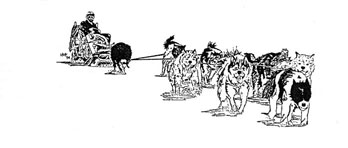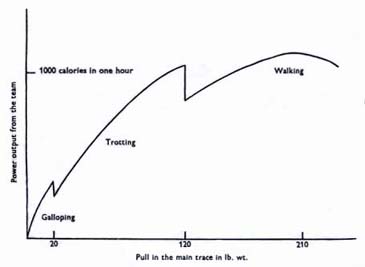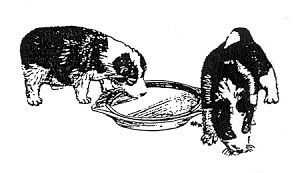Table of Contents
*
The Return
*
Dogs in Greenland
*
The Contribution of Dogs to Exploration in Antarctica
*
Page from the Behaviour Notebook: Raising Raven
*
Antarctic Sketches
*
Physiology of Sledge Dogs
*
The Qitdlarssuaq Chronicles, Part 2
*
News Briefs:
Thesis update
Blue Eye update
Mailbag
*
Product Review: DirectStop®
*
Book Review: Carved from the Land
*
Tip for the Trail: Re-lining Water Jug Caps
*
IMHO: Preservation vs. Savingw
Navigating This
Site
Index of articles by subject
Index
of back issues by volume number
Search The
Fan Hitch
Articles
to download and print
Ordering
Ken MacRury's Thesis
Our
comprehensive list of resources
Talk
to The
Fan Hitch
The Fan
Hitch home page
ISDI
home page
Editor: Sue Hamilton
Webmaster: Mark Hamilton
Contents of The Fan Hitch Website and its publications are protected by international copyright laws. No photo, drawing or text may be reproduced in any form without written consent. Webmasters please note: written consent is necessary before linking this site to yours! Please forward requests to Sue Hamilton, 55 Town Line Rd., Harwinton, Connecticut 06791, USA or mail@thefanhitch.org

Ken Doyle and ‘The Giants’,
1968
By Mike Fielding from The Book that Wasn't
THE PHYSIOLOGY OF SLEDGE DOGS
by R.J.F. TAYLOR
[MS. received 7 September 1956.]
In 1954 and 1955 the author was stationed at Hope Bay in Graham Land, as one of the twelve men at Base D of the Falkland Islands Dependencies Survey. During this time an investigation was carried out into the physiology of sledge dogs. This investigation was divided into two main parts: the first was a study of the sledging diet, and the second of the factors affecting the work output of sledge dogs.
As well as summarizing the results, this article attempts to make two particular points. The first is to demonstrate the unusual opportunity for detailed scientific work that now exists in the Falkland Islands Dependencies, and the second that such work need not be of a specialized and remote nature, but can be regarded as part of the general fabric and structure of pure science.
On average there were seventy-five dogs at Hope Bay, most of which had originally been brought from Labrador in 1944 and 1945, but are now in their third Antarctic generation.1 Other dogs came from Canada and Greenland in 1954, and these were smaller and faster than the "native" stock.2 Most of the investigation was carried out on a particular team of nine dogs with which the author traveled 2700 miles. The longest journey was a little under 900 miles and lasted three months.2
At base, dogs were fed seal meat on alternate days, but on journeys the diet consisted of "Bovril" dog pemmican, which was usually fed in 1 lb. blocks. This food has been the basis of sledging rations for dogs on British expeditions since it was first used by H. G. Watkins in 1930.
"Bovril" dog pemmican is a dry and compact food made from Argentine beef. Two-thirds of it is protein, one-third is fat and there is no carbohydrate. There is no vitamin A in pemmican, but it is not essential in a sledging ration. The reason is that the dogs receive a liberal supply of vitamin A at base, and can store sufficient in their bodies to last ten months with no further intake.
There is insufficient vitamin B1 and an incipient deficiency was demonstrated in a dog after fifteen days on a "Bovril" dog pemmican diet.
Vitamin C is also absent from this pemmican, but dogs, like the majority of mammals, can synthesize this vitamin and so do not need a dietary supply.3 Man, monkeys and guinea-pigs are exceptions and they develop "scurvy" with insufficient vitamin C. Recently it has been shown that rats, which normally synthesize sufficient, do not do so under extreme conditions, and it has been suggested that dogs, while sledging, might develop scurvy also. This possibility was considered, and the results were negative and conclusive. After two months on a "Bovril" dog pemmican diet with fairly rigorous conditions, dogs still synthesized more than sufficient vitamin C for their needs.
"Bovril" dog pemmican was neither absorbed nor utilized satisfactorily. The dogs passed 30 per cent of the dry matter in the diet into their faeces; the equivalent figure for a man eating sledging rations is 4 per cent.4 The bulk of the faeces from the dogs was protein, from man it is fat. The urine was saturated with urea and also contained considerable quantities of indigoid pigments. The significance of this last finding is not clear, but the evidence suggests marked disturbance in the normal process of absorption and too much protein in the diet.5

Graph showing the effect of load on
power output of a
team of nine dogs.
The average weight of the
dogs was 85 lb.
Besides this negative criticism of "Bovril" dog pemmican as a sledging ration, some positive and constructive evidence was collected. Beef, which is the basis of this food, is an expensive form of animal protein. Some pemmican was made replacing the beef by whale meat, which is cheap. This was fed to the dogs during a journey of sixteen days, and no significant difference was found in the effects of feeding the whale and beef pemmicans. The second and more important demonstration was that the dogs could absorb and utilize more fat than is in "Bovril" dog pemmican.
The ideal for any sledging ration is to have the maximum utilizable energy with a minimum of weight. This entails a low water content and a high fat diet giving little faecal residue (for fat produces twice as much energy as the same weight of carbohydrate or protein). Some of these aims are conflicting, for example a high fat diet with good utilization, and as yet there is no exact knowledge of the optimum design or even the total amount for a concentrated and complete diet for man or for any animal. A new diet has been provided by Bob Martin's Ltd., and this contains approximately 50 per cent fat, 25 per cent protein and 20 per cent carbohydrate. Thus there has been an increase in the amount of fat and carbohydrate and a reduction in protein. The theoretical calorific value is 2800 in a pound as opposed to the previous 2300, but it is hoped that in practice the difference will be more marked. The formula was decided not only from a knowledge of dogs, but more from general considerations of nutrition, in particular knowledge obtained from rats and from man. Twelve tons of the new ration went to the Falkland Islands Dependencies in the autumn of 1956.
The second line of investigation was into the work output of dogs. This depended on the measurement of the force exerted by a team of dogs pulling a sledge. The pull was measured electrically, using a new type of strain gauge developed by Saunders-Roe Ltd.6 The pull exerted altered the electrical resistance of the gauges and this change was measured by a milliammeter mounted at the back of the sledge. Extensive records were collected with this apparatus.
Work is the product of force and distance, and so load plays a dominant part in determining work output. With no load, no "useful" work is done, however fast the team moves. With too heavy a load there is no work output, as the dogs cannot move the sledge. At some intermediate load or loads the work output will be a maximum (see Fig.). The maximum speed of the particular team, unladen, was around 15 m.p.h. and the maximum pull they could exert to keep a heavy sledge moving was just over 300 lb. wt. The maximum work output occurred when trotting at 5 m.p.h. with a drag of 120 lb. wt., and when walking at 3.2 m.p.h. with a drag of 210 lb. wt. The maximum "useful" work output, from the team of nine dogs of average 85 lb., was 1100 Calories during one hour. For a few minutes the work output could be increased by 23 per cent. These figures for the maximum work done by the dogs are similar, weight for weight, to that produced by the "rowing eight" that won their event in the Olympic Games of 1924.7
It is suggested that different factors may limit the maximum work output at different loads. The suggestions are that the rate of oxygen supply to the muscles limits useful work output when trotting, and that muscle power limits useful work output when walking. These controls can be likened to fuel supply and to engine size. Dogs can only gallop with an extremely light sledge. While galloping there are instants in time when all the feet are off the ground together, 8 and so any drag will result in alternate retardations and accelerations of the body and therefore energy is wasted. It is suggested that the type of gait, the "gear box", limits maximum useful work output while galloping with a sledge, and not oxygen uptake or total muscle power.
The muscles of two sledge dogs were examined in an attempt to find the total weight of locomatory muscle. It is extremely difficult to decide from dissections exactly which muscles are employed, but a figure was obtained for the power/weight ratio of dog muscle which is slightly higher than the accepted figure for mammalian muscle of 17 watts per kilogram.9
During a journey, diet is rigidly controlled and the details are known as completely as "Bovril" dog pemmican can be analysed. Experiments produced a knowledge of the maintenance needs of resting dogs and the measurement of the work output enables the energy input and output to be balanced. Although this calculation does involve certain drastic assumptions, it has been carried out and three conclusions have emerged. The first is that the muscles of the dogs have an efficiency of at least 20 per cent, i.e. they convert chemical energy to mechanical energy at this figure. The second conclusion is that under "normal sledging conditions" three-quarters of the mechanical power produced in the locomatory muscles is used in moving the sledge and the other quarter is used in moving the dogs. The third conclusion is that a drop in temperature of one degree Fahrenheit demands an increase of 0.3 per cent in maintenance needs.
In the work so far described, the dogs are considered as engines. This is too simple a view and the loss of work output on journeys can be attributed both to mechanical and psychological reasons. On a ration of 1 lb. of "Bovril" dog pemmican, the loss in work output due to mechanical and nutritional deterioration was 5 per cent a week; on 1-1/4 lb. and vitamin tablets, this figure was 2 per cent. However, the actual working rate during journeys varies from day to day and sometimes fell to 50 per cent of the maximum, even with good sledging surfaces. Also there were occasional marked spurts, usually with obvious mental stimuli, and it is concluded that the psychology of the dogs played a bigger part in determining the variations in their performance than their physical condition. Thus, during travel on flat and continuous sheets of ice and snow, dogs became bored, and changes in the environment, such as a visual objective, produced a marked increase in their performance. This point is well presented by Young10 in connexion with mountaineering: "Mental distraction is as important as change of movement for the easy performance of sustained physical effort", and "Far more than any muscular strength or even physical fitness, will power is the dominant force in maintaining normal energy."
The organization of the Falkland Islands Dependencies Survey is suitable for many kinds of physiological investigation and it is hoped that another “dog physiologist” will be appointed. There is nearly complete control of feeding, breeding and exercise of the dogs, and extensive and reliable records are in existence. In fact, sledging is very similar to a laboratory experiment using a treadmill, except that the observer is taking exercise also.

Mandy’s Pups:
Grapple and Puke,
drinking from lid of Pyrex casserole.
They also loved to put their paws in the
milk and walk
through it as they
were feeding. Very messy. By
Mike Fielding
from The Book that Wasn't
Acknowledgements
Complimentary to the work done in Graham Land, Professor
A. N. Worden
carried out some feeding tests at Huntingdon. Some of his
results are included
in this paper and full acknowledgement must be made to him
and to Dr. C.
E. Waterhouse for help and advice on nutritional matters.
The analysis
of faeces was arranged by Dr. E. M. Widdowson, who also
gave much advice.
Many other people have given assistance, both in the field and at Cambridge, and the work must be considered more as a composite piece of research than an individual effort. Finally I should like to thank Dr. E. Kodicek, Dr. P. M. O. Massey and K. E. C. Powell, and also the Royal Society who paid for the strain gauge apparatus.
References
1 ADIE, R. J. Sledge
dogs of the Falkland
Islands Dependencies Survey, 1947-50. Polar Record,
Vol. 6, No.45,
1953, p. 631-41.
2 The Falkland Islands
Dependencies
Survey, 1954-55. Polar Record, Vol. 8, No. 54,
1956, p. 260-264.
3 INNES, J. R. M.
Vitamin C requirements
of the dog. Second Report of the Director of Animal
Pathology, Cambridge,
1931, p. 143-50.
4 BUTSON, A. R. C.
Utilization of high
fat diet at low temperatures. Lancet. Vol. 250,
No. 1, 1950, p.
993-94.
5 RIMINGTON, C. Indigoid
pigments derived
from a pathological urine. Biochemical Journal,
Vol. 40, No. 5,
1946, p. 669-74.
6 JACKSON, P. The foil
strain gauge.
Instrument
Practice. Vol. 7, No. 10, 1953, p. 775-86.
7 HENDERSON, Y. and
HAGGARD, H. W.
The maximum of human power and its fuel. American
Journal of Physiology.
Vol. 72, No. 2, 1925, p. 264-82.
8 GRAY, J. How
animals move.
Cambridge, 1953.
9 GRAY, J. Studies in
animal locomotion.
VI. Journal of Experimental Biology. Vol. 13, No.
2, 1936, p. 192-99.
10 YOUNG G. WINTHROP. Mountain
craft,
4th edition. London, 1945, p. 14.